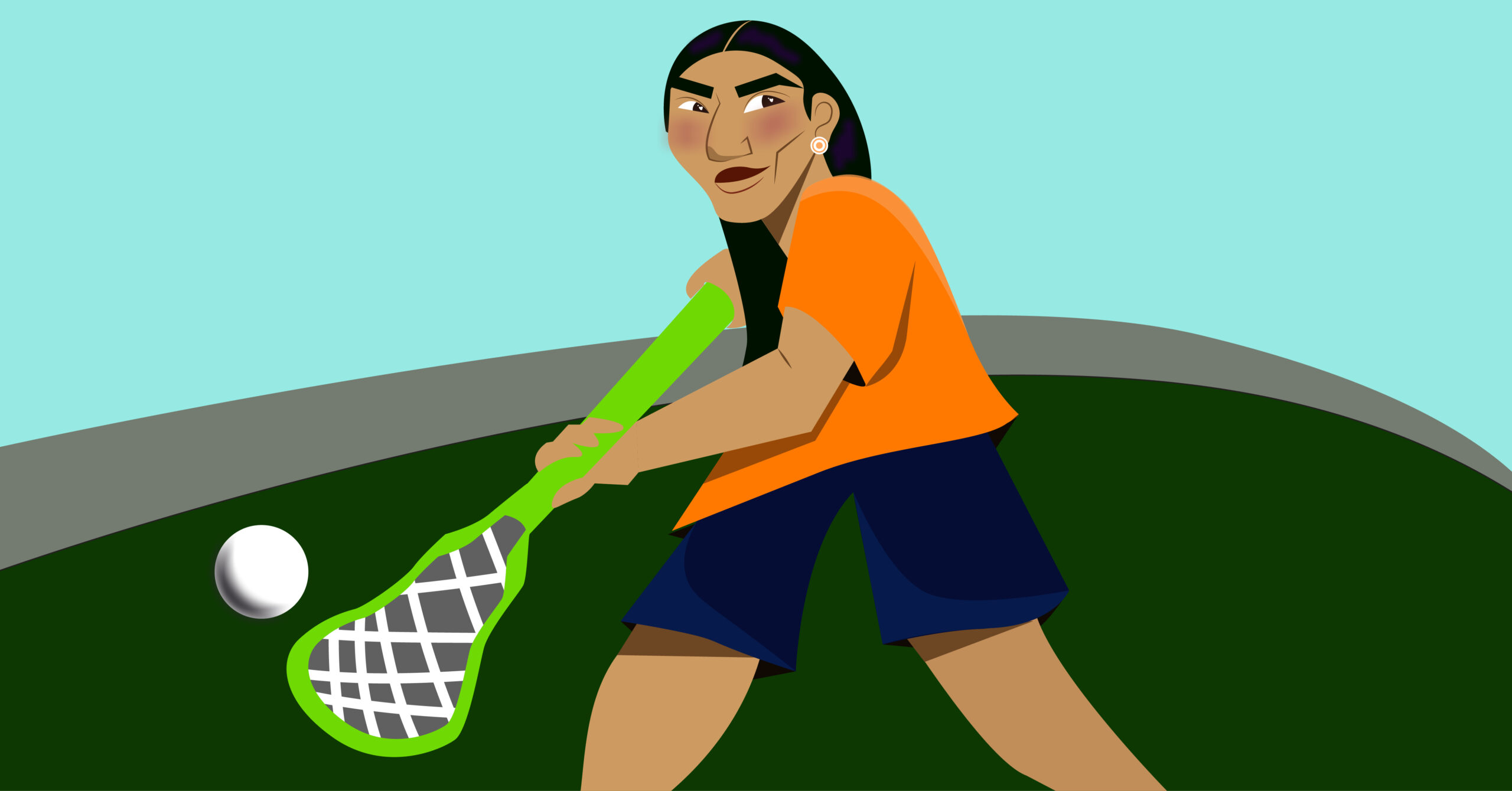The indigenous history of Canada’s national sport
Long before lacrosse was played for championships and titles, it belonged to Indigenous communities of North America.
In 1637, a Jesuit Missionary from New France named Jean de Brébeu wrote in his journal about an Indigenous sport he had encountered, which he called “crosse.” The game required players to carry, pass, and shoot a rubber ball using a wooden stick with a small pouch. The players were awarded a point if they could hit the opponent’s target.
Sound familiar? Even in the 17th century, “crosse” was quite similar to its modern iteration—and only a couple of letters away. In the centuries since, lacrosse has gained popularity. It is now played in high schools, colleges, and universities across Canada and the United States. The sport has dozens of recreational and competitive leagues, and in 1944, Canada named lacrosse its official summer sport.
To the Mohawk, however, the game was known as tewaarathon. Before its European appropriation, the sport sometimes involved thousands of men—often from opposing villages or communities—and the match would be played on large open fields, sometimes stretching up to 9.7 km in length. These games could sometimes last several days, with players running up and down the field from sunup to sundown.
According to Donald Fischer, the author of Lacrosse: A History of the Game, “[it] was middle-class Anglo-Canadians from Montreal and Mohawk[s] […] from the nearby Caughnawaga reserve whose cultural exchange led to the birth of modern lacrosse.” Although immediate responses to the sport were not entirely positive, particularly because of its Indigenous origin and role in training men for war, the sport’s settler community slowly grew.
Importantly, Fischer notes that “[t]he Anglo-Canadian appropriation of Mohawk lacrosse was a peculiar event in the history of the New World, since it was usually the colonizers who were seeking to force the Indians to accept their culture.” He also explains that, despite the polite phrasing of a “cultural exchange,” Canadian settlers believed it was a “‘primitive’ native game” that “could be sanitized and made to serve young men facing the challenges brought on by industrialization and urbanization…”
In Indigenous communities, lacrosse was played for a variety of different reasons. The sport often settled disputes between communities, serving as a less violent and more enjoyable alternative to war. It also conditioned and strengthened young men, marked the celebration of festivities, and served as a source of gambling, the latter of which generated significant interest in the sport from both Indigenous and settler communities.
It’s often the intent of people discussing the history of lacrosse to simply note that the sport is enjoyable because it is old and its Indigenous history makes it unique in some mythical way. What is often left undiscussed is that the European colonization of the sport was an act of appropriation in many ways. In 1856, William George Beers established the Montreal Lacrosse Club. He later modified the sports’ rules to require shorter games, fewer players, a redesigned stick, and a rubber ball.
By the 20th century, lacrosse had spread throughout the continent, and several leagues had developed, ranging from the recreational to the collegiate level. In the 1930s, a different type of lacrosse diverged from the traditional field of lacrosse. This new sport, box lacrosse, was played on a smaller court, which was “boxed” in with walls. Today, there are several professional lacrosse leagues. The most popular field league is the Premier Lacrosse League (PLL), and the most popular box league is the National Lacrosse League (NLL). In the past decade, participation in the sport has increased by almost 35 per cent; however, attendance at professional matches had been dwindling before the establishment of the PLL in 2019.
The First Nations Lacrosse Association is Canada’s leading governing body for Indigenous lacrosse players and lacrosse teams. The association directs five different teams: the Iroquois men’s national team, the Iroquois men’s national under-19 team, the Haudenosaunee women’s national team, the Haudenosaunee women’s national under-19 team, and the Iroquois national indoor lacrosse team. Each of these teams competes internationally and is sanctioned by World Lacrosse, which means they are the only officially sanctioned Indigenous national teams for any sport in the world.

